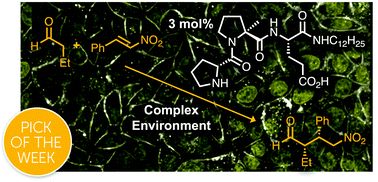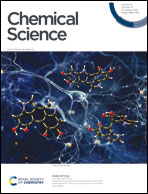Stereoselective peptide catalysis in complex environments – from river water to cell lysates†
Abstract
Many stereoselective peptide catalysts have been established. They consist, like nature's catalysts, of amino acids but have significantly lower molecular weights than enzymes. Whereas enzymes operate with exquisite chemoselectivity in complex biological environments, peptide catalysts are used in pure organic solvents and at higher concentrations. Can a peptide catalyst exhibit chemoselectivity reminiscent of enzymes? Here, we investigated the properties of tripeptide catalysts in complex mixtures in hydrophobic and aqueous solvents. We challenged the catalysts with biomolecules bearing functional groups that could interfere by coordination or reaction with the peptide, the substrates, or intermediates. H-DPro-αMePro-Glu-NHC12H15 emerged through tailoring of the trans/cis ratio of the tertiary amide as a conformationally well-defined tripeptide that catalyzes C–C bond formations with high reactivity and stereoselectivity – regardless of the solvent and compound composition. The chemoselectivity of the tripeptide is so high that it even catalyzes reactions in cell lysates. The findings provoke the question of the potential role of peptide catalysis in nature and during the evolution of enzymes.

- This article is part of the themed collections: Most popular 2022 chemical biology articles, 2022 ChemSci Pick of the Week Collection and 2022 Chemical Science HOT Article Collection


 Please wait while we load your content...
Please wait while we load your content...